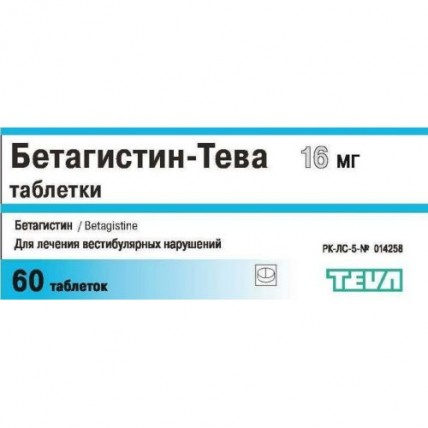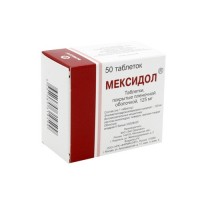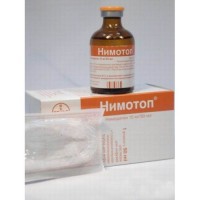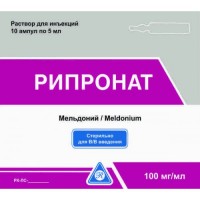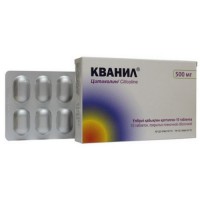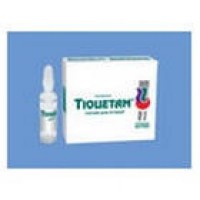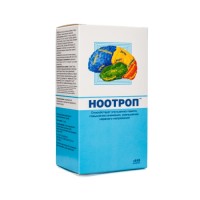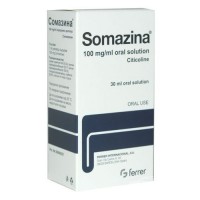Betahistine-Teva 16 mg (60 tablets)
- $26.40
One tablet contains the active ingredient - Betahistine dihydrochloride 24 mg
After oral administration, betahistine dihydrochloride is rapidly and completely absorbed. Plasma protein binding is low (less than 5%). Betahistine dihydrochloride is rapidly metabolized in the liver to the inactive major metabolite, 2-pyridylacetic acid, and to dimethyl betahistine. The half-life is 3.5 hours. Excretion of betahistine hydrochloride is 90% through the kidneys as the main metabolite.
Betahistine hydrochloride is a synthetic analogue of histamine. It acts on histamine H1 and H3 receptors of the inner ear and vestibular nuclei of the central nervous system. Improves microcirculation and capillary permeability of the inner ear, increases blood flow in the basilar arteries, normalizes endolymph pressure in the labyrinth and cochlea.
For treatment
The recommended starting dose is 24 mg per day (or 16 mg twice daily) by mouth during or after meals. The daily dose may be increased to 48 mg.
During the course of treatment, the dose is adjusted depending on the therapeutic effect. The duration of the course of treatment is determined by the attending physician individually.
A stable therapeutic effect occurs after two weeks of treatment. The best results are observed after several months of treatment.
Seldom
- headache, drowsiness
- increased intracranial pressure
- sensation of heat
- palpitations, tightness in the region of the heart
- gastrointestinal disorders: nausea, vomiting, heartburn, pain in the epigastric region, flatulence (these symptoms will be less pronounced if you take the drug with meals or reduce the dosage)
- exacerbation of a history of bronchial asthma, rash, urticaria, itching, anaphylactic reactions
- hypersensitivity to betahistine hydrochloride and / or to any of the components of the drug
- pheochromocytoma
- pregnancy and lactation
- children and adolescents up to 18 years of age
- galactose intolerance, Lapp lactase deficiency or glucose-galactose malabsorption
Carefully:
- stomach ulcer
- bronchial asthma
- in patients with urticaria, rash or allergic rhinitis
- severe hypotension
The metabolism of betahistine is inhibited by monoamine oxidase (MAO) inhibitory drugs, including subtype B (eg, selegiline). Since betahistine hydrochloride is a histamine analogue, the simultaneous use of H1 antagonists can cause a mutual weakening of the effect of active agents.
Caution should be exercised when prescribing the drug in patients with peptic ulcer (including history), as dyspepsia may develop. When taking betahistine, the symptoms of hives, rash, allergic rhinitis may worsen.
Features of influence on the ability to drive a vehicle or potentially dangerous mechanisms
Due to the side effect in the form of drowsiness, it is possible to reduce the ability to drive a car and control machines.
Symptoms: dry mouth, nausea, vomiting, dyspepsia, ataxia, facial flushing, dizziness, palpitations, bronchial spasm and edema, and convulsions may also occur after taking very high doses.
Treatment: symptomatic (gastric lavage, activated charcoal). There is no specific antidote.
Store at a temperature not exceeding 25ºС.
Keep out of the reach of children!
Shelf life - 3 years
Do not use after the expiration date.
Pharmacological properties
Pharmacokinetics
After oral administration, betahistine dihydrochloride is rapidly and completely absorbed. Plasma protein binding is low (less than 5%). Betahistine dihydrochloride is rapidly metabolized in the liver to the inactive major metabolite, 2-pyridylacetic acid, and to dimethyl betahistine. The half-life is 3.5 hours. Excretion of betahistine hydrochloride is 90% through the kidneys as the main metabolite.
Pharmacodynamics
Betahistine hydrochloride is a synthetic analogue of histamine. It acts on histamine H1 and H3 receptors of the inner ear and vestibular nuclei of the central nervous system. Improves microcirculation and capillary permeability of the inner ear, increases blood flow in the basilar arteries, normalizes endolymph pressure in the labyrinth and cochlea.
Indications for use
For treatment
- Meniere's disease or Meniere's syndrome
- Vestibular dizziness of various origins (dizziness with nausea and vomiting, ringing in the ears, hearing loss)
Dosage and administration
The recommended starting dose is 24 mg per day (or 16 mg twice daily) by mouth during or after meals. The daily dose may be increased to 48 mg.
During the course of treatment, the dose is adjusted depending on the therapeutic effect. The duration of the course of treatment is determined by the attending physician individually.
A stable therapeutic effect occurs after two weeks of treatment. The best results are observed after several months of treatment.
Possible side effects
Seldom
- headache, drowsiness
- increased intracranial pressure
- sensation of heat
- palpitations, tightness in the region of the heart
- gastrointestinal disorders: nausea, vomiting, heartburn, pain in the epigastric region, flatulence (these symptoms will be less pronounced if you take the drug with meals or reduce the dosage)
- exacerbation of a history of bronchial asthma, rash, urticaria, itching, anaphylactic reactions
Contraindications
- hypersensitivity to betahistine hydrochloride and / or to any of the components of the drug
- pheochromocytoma
- pregnancy and lactation
- children and adolescents up to 18 years of age
- galactose intolerance, Lapp lactase deficiency or glucose-galactose malabsorption
Carefully:
- stomach ulcer
- bronchial asthma
- in patients with urticaria, rash or allergic rhinitis
- severe hypotension
Drug Interactions
The metabolism of betahistine is inhibited by monoamine oxidase (MAO) inhibitory drugs, including subtype B (eg, selegiline). Since betahistine hydrochloride is a histamine analogue, the simultaneous use of H1 antagonists can cause a mutual weakening of the effect of active agents.
Special instructions
Caution should be exercised when prescribing the drug in patients with peptic ulcer (including history), as dyspepsia may develop. When taking betahistine, the symptoms of hives, rash, allergic rhinitis may worsen.
Features of influence on the ability to drive a vehicle or potentially dangerous mechanisms
Due to the side effect in the form of drowsiness, it is possible to reduce the ability to drive a car and control machines.
Overdose
Symptoms: dry mouth, nausea, vomiting, dyspepsia, ataxia, facial flushing, dizziness, palpitations, bronchial spasm and edema, and convulsions may also occur after taking very high doses.
Treatment: symptomatic (gastric lavage, activated charcoal). There is no specific antidote.
Storage conditions
Store at a temperature not exceeding 25ºС.
Keep out of the reach of children!
Shelf life - 3 years
Do not use after the expiration date.
